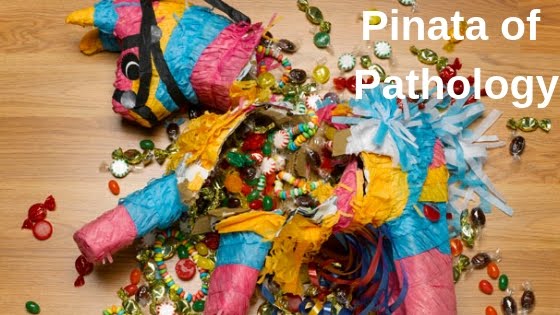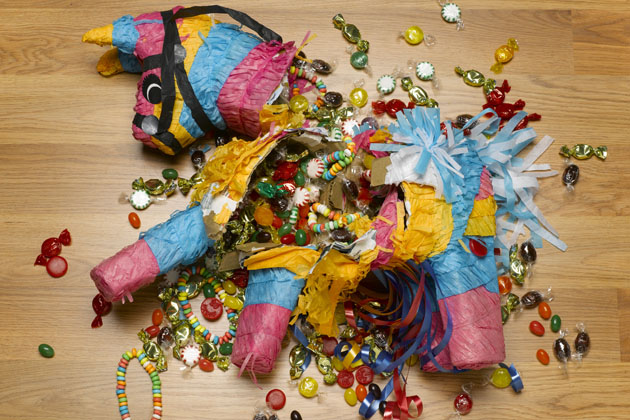As much as homeopathic medicine is derided and debunked, it has always been a big question mark for me. Why? Because the homeopathic flu medicines use the exact same virus strains found in flu vaccinations.
Vaccinations in general, the golden child of Western medicine, can be characterized as 'like cures like' the principle upon which the entire practice of homeopathic medicine is built.
So I have never been one to dismiss homeopathy and have actually done quite a bit of reading on the topic. Although I can't say I've ever seen marked results from it so the jury is still kind of out on a personal level.
However, today, the Huffington Post reports that Nobel Laureate Dr. Luc Montagnier not only believes in homeopathy, but his research is centering on how tiny amounts of a substance alter the structure of water with their electromagnetic waves.
Montagnier says, "I can't say that homeopathy is right in everything. What I can say now is that the high dilutions (used in homeopathy) are right. High dilutions of something are not nothing. They are water structures which mimic the original molecules."
The article goes on to list the clinical evidence for homeopathy, which is interesting.
"Most clinical research conducted on homeopathic medicines that has been published in peer-review journals have shown positive clinical results,(3, 4) especially in the treatment of respiratory allergies (5, 6), influenza, (7) fibromyalgia, (8, 9) rheumatoid arthritis, (10) childhood diarrhea, (11) post-surgical abdominal surgery recovery, (12) attention deficit disorder, (13) and reduction in the side effects of conventional cancer treatments. (14) In addition to clinical trials, several hundred basic science studies have confirmed the biological activity of homeopathic medicines. One type of basic science trials, called in vitro studies, found 67 experiments (1/3 of them replications) and nearly 3/4 of all replications were positive. (15, 16)
In addition to the wide variety of basic science evidence and clinical research, further evidence for homeopathy resides in the fact that they gained widespread popularity in the U.S. and Europe during the 19th century due to the impressive results people experienced in the treatment of epidemics that raged during that time, including cholera, typhoid, yellow fever, scarlet fever, and influenza. "
The article is well worth a read. Very startling and shedding light on a completely new (to most of us) direction of science.
EDIT: I took some time to go through the article's bibliography and the homeopathic claims may be specious if not a bit shady. Some study results appear to have been willfully spun to a positive bias so take some of the homeopathic information with a grain of salt. Further the author is a major proponent of homeopathy. I'm a little surprised the piece passed editor scrutiny at The Huffington Post. I assumed it was a mainstream media source with high editorial standards, I was wrong.
Dr. Luc Montagnier's work still stands and is still applicable to homeopathy in regards to viruses.
Do I Have a Food Allergy?
4 days ago





Yeah, the Huffington Post is like that. They do some kind of minor screening of bloggers and writers based on credentials (like being a celeb apparently qualifies some people to write on the environment), but mostly they're looking for watercooler type stuff that gets people talking and draws clicks. Even most mainstream newspapers do that with their op-ed pages (and even more so on their websites).
ReplyDeleteI'm pretty skeptical on homeopathy, personally. (I started a comment here before you updated the post, but I guess I failed to finish it and post it. Oops!) But this is interesting!
The main reason I refuse to buy into homeopathy is because it violates a well-known Law of Chemistry.
ReplyDeleteA bit of explanation first: In chemistry, we mesure the amount of "stuff" we have in a unit called moles. One mole of carbon would be 6.02 x 10^23 carbon atoms. One mole of sugar would be the same number of sugar molecules. This is because the molar mass - the mass of one mole of a substance - differs greatly between what you're looking at, but it's still the same amount of 'stuff'. Case in point: One mole of hydrogen weighs slightly more than one gram. One mole of bismuth weighs about two hundred and nine grams. But, to a chemist, it's still the same amount of stuff.
For salts, like table salt, it's a little different: One mole is 6.02 x 10^23 formula units, which is in the case of table salt, NaCl, would be one Na+ ion and one Cl- ion. In silver nitrate, which I use below, a formula unit would be one positively-charged silver ion and one negatively-charged nitrate ion.
So, let's say you want to make some Argentum Nitricum, which is a homeopathic remedy for fear. Argentum nitricum is Latin for silver nitrate, and a little research shows that silver nitrate is the "active" ingredient. Silver nitrate has a molar mass of about 170 grams. So, now you'd have to make a 1:1 mixture. Now, I'm not sure if the homeopaths use a volume/volume, a weight/weight, or a mol/mol ratio, but mol/mol is most generous to homeopathy, so I'll use that.
We take 170grams of silver nitrate (one mol) and mix it with 18mL of water (roughly one mol of water). That gives us a solution with a concentration of 55.56 mol/L.
Now, let's make a one C solution. Take one mililiter of this 55.56 solution, and dilute it by a factor of 100. We can calculate the concentration by using the following equation: M_1 x V_1 = M_2 x V_2, where M_1 is our starting concentration, V_1 is 1mL, M_2 is what we want to find (the new concentration) and V_2 is our new volume (100mL). Rearrange and substitute, and we get a new concentration of 0.5556 mol/L. Which means that we have 0.5556mol of silver nitrate for every liter of solution. Since we only have 100mL of solution, we have 0.05556mol, or 3.3447 x 10^22 formula units of silver nitrate.
Now, we should go to a 2C solution. Using the same process, we get 0.0005556mol of silver nitrate, or 3.3447 x 10^20 formula units.
Repeat this 10 more times, and you'll reach a 12C solution, where in your new solution, you have 3.3447 formula units. Except that you can't have only part of a formula unit, so we have to round. Normally you'd round down here, but I'm trying to be generous to homeopathy, so I'll round up. 4 formula units. Repeat the dilution, for a 13C remedy. Now you'd have 0.04 formula units. Except, as I stated before, you can't have part of a formula unit. Mathematically, there's nothing left of the silver nitrate.
Now, think that a lot of the remedies out there have stuff that's 100C, or 200C, or even 400C. They're diluting water into water, and coming up with more water.
As for Dr. Montagnier's study, I'm not qualified to comment on it since I'm a chemist, not a microbiologist, but Orac over at Respectful Insolence does a good job of pointing out likely flaws and providing reasonable alternate explanations for his results here.